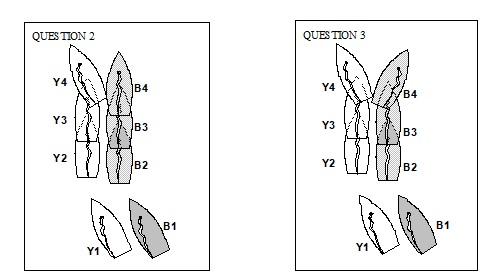


Section B – The Prestart
TR CALL B2
Rule 11, On the Same Tack, Overlapped
Rule 13, While Tacking
Rule 16.1, Changing Course
Definitions, Keep Clear
Question 1
Boats B and Y are overlapped and B, the windward boat, is keeping clear. Y luffs head
to wind, B luffs in response, and both reach head to wind, side by side. B continues to
change course and passes through head to wind. As a result B makes contact with Y.
There is a protest. What should the call be?

Answer 1
When Y luffs, if she fails to give B room to respond and keep clear, penalize Y.
If B could have kept clear, but either responds too slowly or not enough, or overrotates,
then B breaks rule 11 or 13. Penalize B.
Question 2
In similar circumstances, Y luffs without breaking rule 16 and B responds. When head
to wind B maintains this position when she could have tacked off. Slightly later Y bears
away and their sterns make contact. There is a protest. What should the call be?

Answer 2
If Y’s change of course immediately results in contact with B, then B was not keeping
clear and broke rule 11. Penalize B.
If there is a greater distance between them, and Y bears away hard without giving B
room to keep clear, then Y breaks rule 16.1. Penalize Y.
Question 3
In similar circumstances B keeps clear but, when she reaches head to wind, she
maintains this position for a while. B then passes through head to wind and, slightly
later, Y bears away and their sterns make contact. There is a protest. What should the
call be?
Answer 3
When B passes head to wind, the boats are no longer overlapped on the same tack so
paragraph (b) of the definition Keep Clear no longer applies.
If the contact would have occurred without Y bearing away, B breaks rule 13. Penalize
B.
If the contact would not have occurred without Y bearing away, Y breaks rule 16.1.
Penalize Y.







